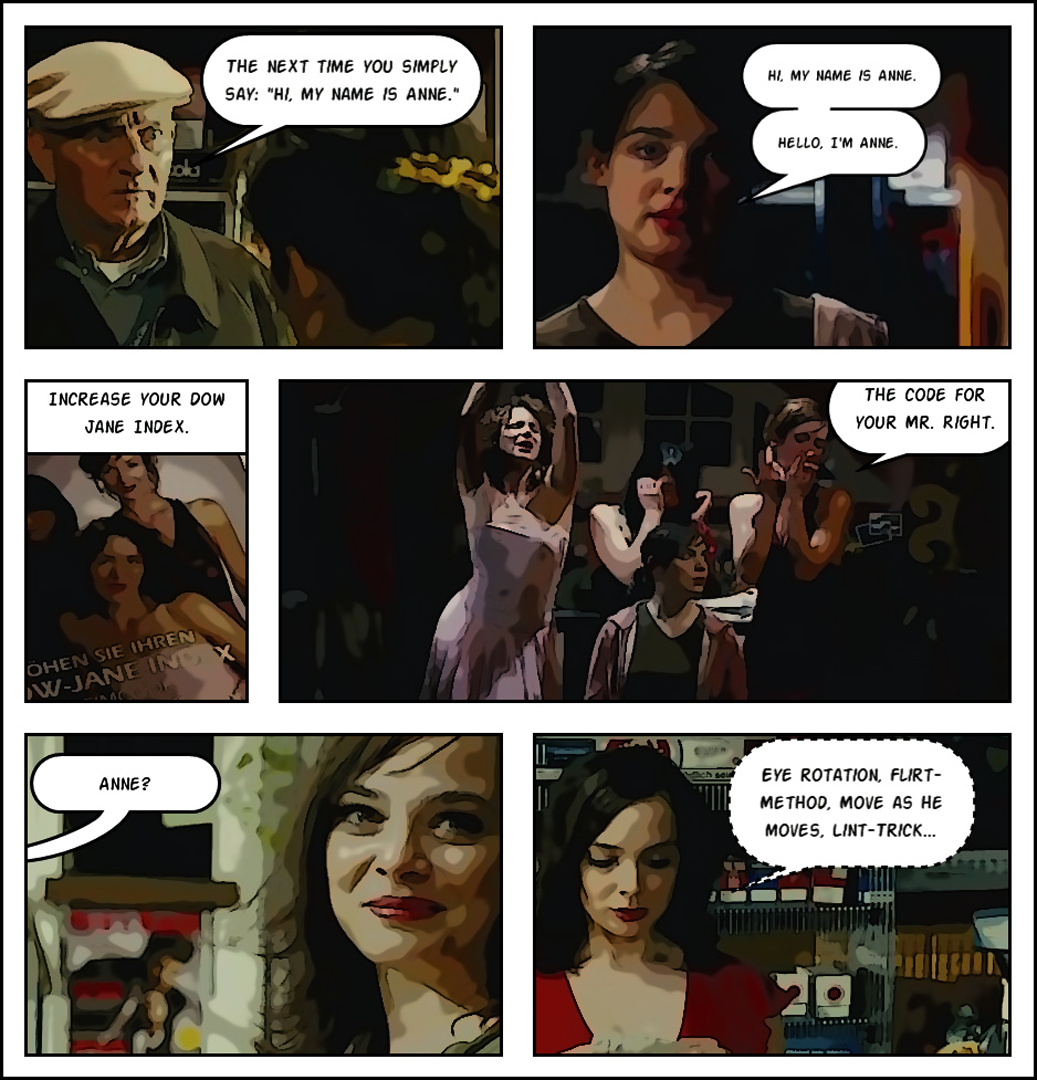“From movie to comic, informed by the screenplay” by Preu and Loviscach
Conference:
Type(s):
Title:
- From movie to comic, informed by the screenplay
Presenter(s)/Author(s):
Abstract:
Semi-automated solutions can transform the images of a film into a comic strip. Whereas the conversion of movies [Hwang et al. 2006] and 3D games [Shamir et al. 2006] to comics has been addressed before, we propose novel ways of user interaction and–most prominently–leverage much information from a movie’s screenplay. Thanks to standard screenplays’ highly structured “studio format,” we can employ textual analysis at several stages: • The line counts of the scenes in the screenplay are used to estimate every scene’s temporal placement in the film. • The scenes’ dialogue is extracted from the screenplay and turned into speech balloons placed sequentially. • Verbal directions such as (whispers) are recognized and mirrored by corresponding type and speech balloon styles. • If a character’s dialogue is interrupted by actions, its different parts are used to form a double-burger style speech balloon. • Offscreen speech is put into a speech balloon emanating from a panel’s side; a voice-over is placed in a rectangle. • Verbs in action lines such as The VASE crashes onto the floor. are recognized and turned into noise balloons.
References:
1. Hwang, W.-I., Lee, P.-J., Chun, B.-K., Ryu, D.-S., and Cho, H.-G. 2006. Cinema comics: Cartoon generation from video stream. In Proc. of GRAPP 2006, 299–304.
2. Shamir, A., Rubinstein, M., and Levinboim, T. 2006. Parametric comics creation from 3D interaction. IEEE Computer Graphics and Applications 26, 3, 53–61.
3. Winnemöller, H., Olsen, S. C., and Gooch, B. 2006. Real-time video abstraction. ACM TOG 25, 3, 1221–1226.





